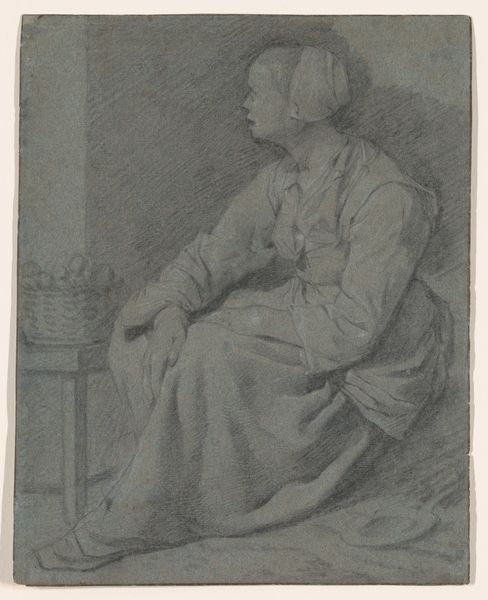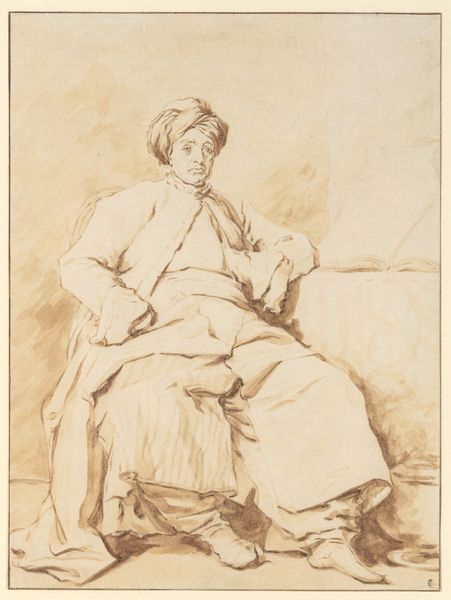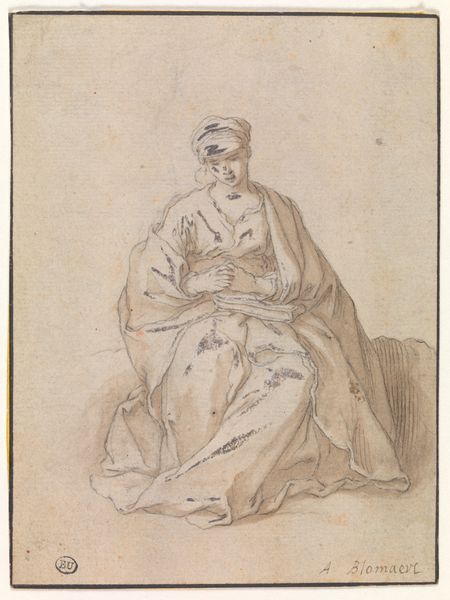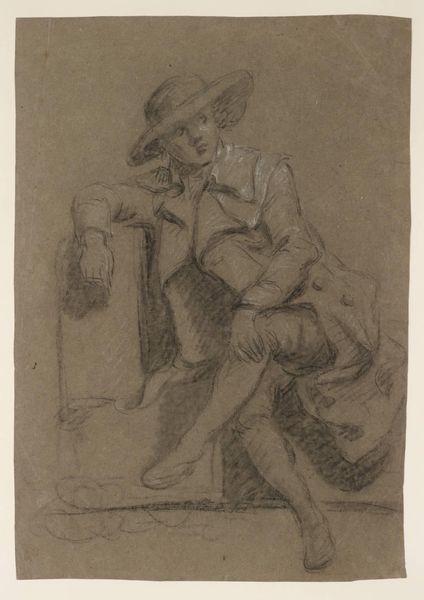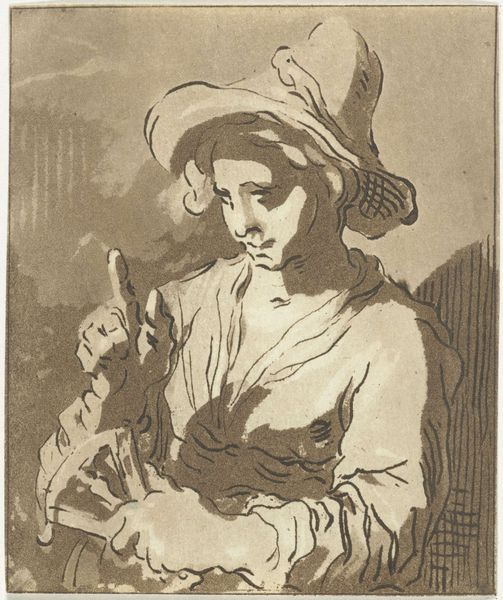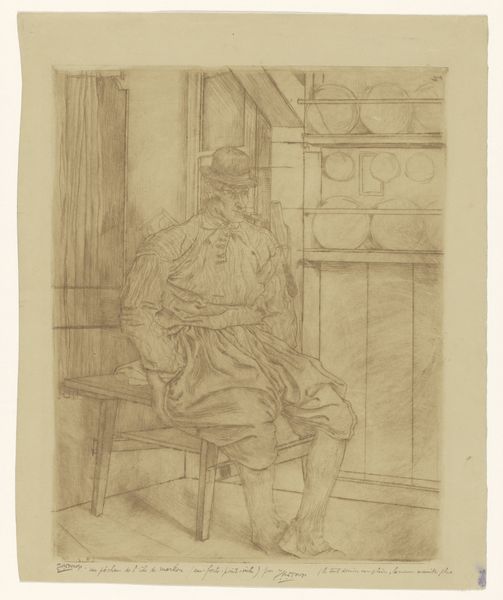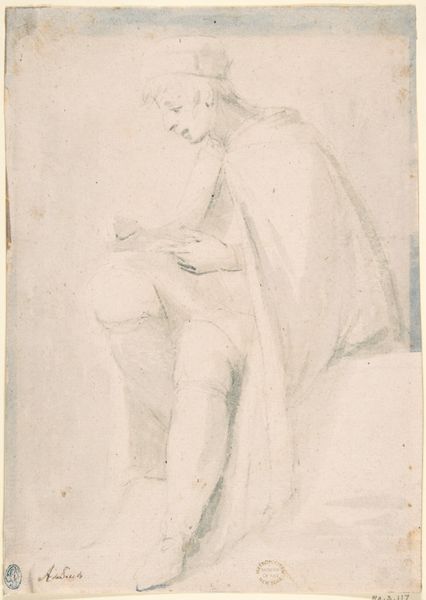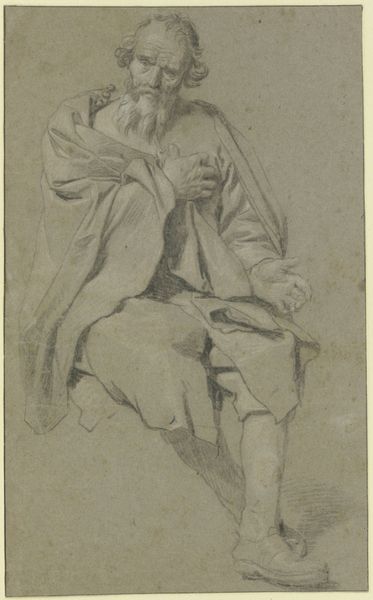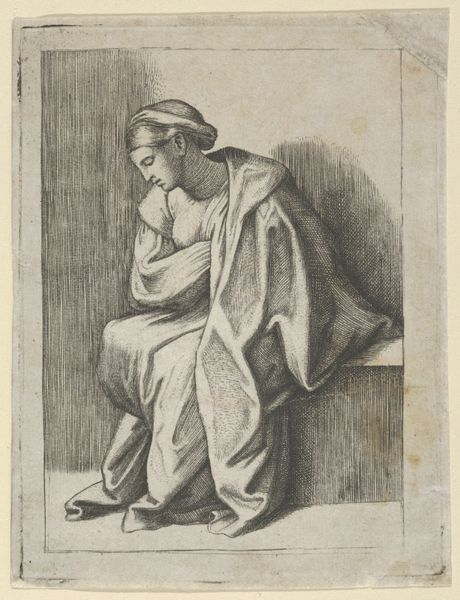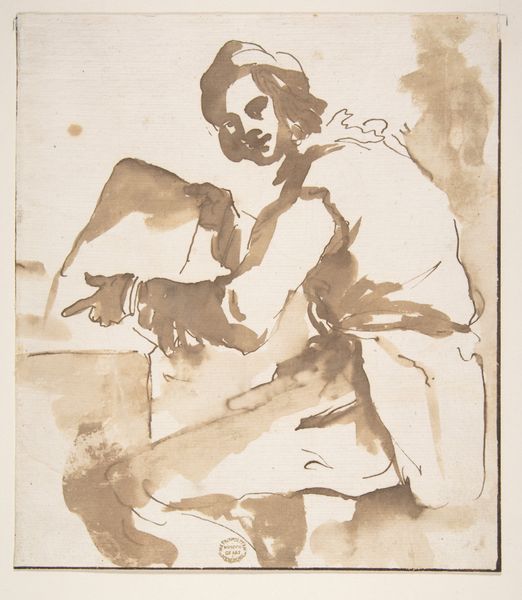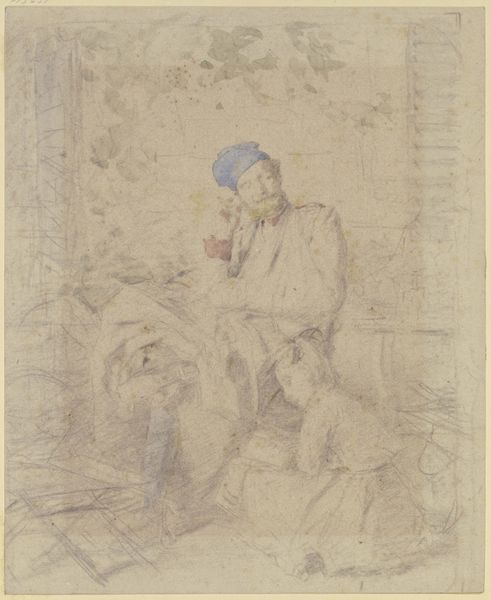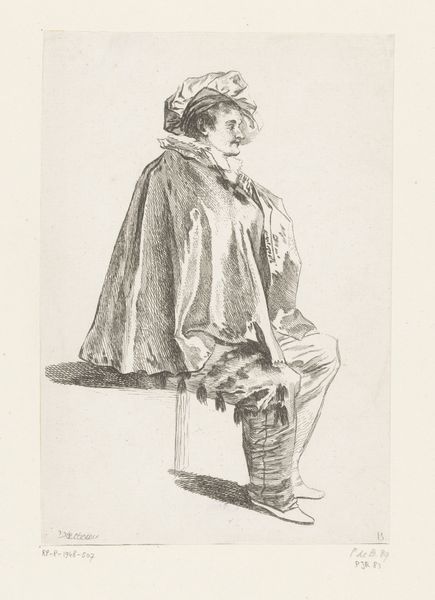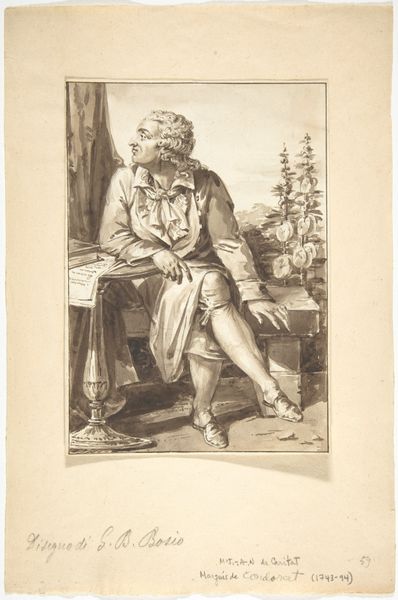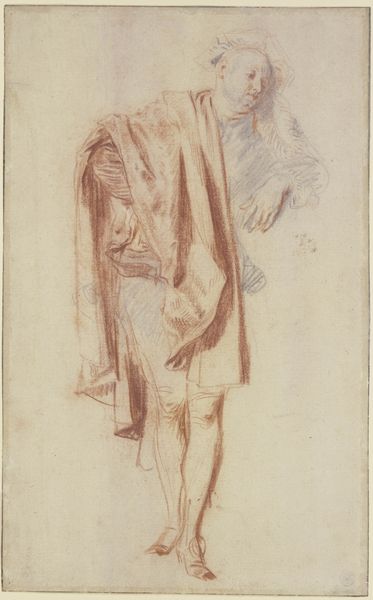
drawing, print, paper, pencil, engraving
#
portrait
#
drawing
#
toned paper
#
facial expression drawing
# print
#
pencil sketch
#
charcoal drawing
#
paper
#
charcoal art
#
portrait reference
#
pencil drawing
#
romanticism
#
pencil
#
animal drawing portrait
#
portrait drawing
#
academic-art
#
engraving
#
portrait art
Dimensions: 107 mm (height) x 76 mm (width) (plademaal)
Editor: Here we have "Kommandør F. Frølich," a drawing from 1838 by Lorenz Frølich, currently held at the Statens Museum for Kunst. The portrait exudes a contemplative mood with its muted tones and the subject’s gaze directed off into the distance. There's also something about his attire, almost like scholarly robes, combined with the head wrapping that really catches my eye. What symbolic weight might be embedded within this piece? Curator: That's a perceptive observation. Think about the enduring symbolic associations. The "robe," as you call it, carries connotations of knowledge, and wisdom. Even in our modern memory, what profession is most associated with robes? Now consider the turban; in the 19th century, was this common formal attire? What happens when this symbol collides with others in the portrait? Editor: Interesting point! No, the turban-like head wrapping doesn't quite fit. It evokes a more exotic, perhaps even Orientalist, image clashing with the European connotations of the robe and the classical statue in the background. Does this dissonance hint at some inner conflict, or perhaps a broader cultural tension? Curator: Precisely. The artist employs cultural memory, intertwining perceived Western identity symbols with those sourced elsewhere. Notice, the statue acts like an ancient, perhaps familial, presence. It becomes something stable, something to be literally grounded against the changing fashion or identity of the sitter. Does Frølich seem to embrace that identity, or to actively defy or reject it in favor of something more... personal? Editor: I see what you mean! It's like he's positioning himself both within and apart from established norms, hinting at the complexities of identity construction. The open book he's holding seems significant as well; an invitation to join in this search for meaning. Curator: Exactly. What seems especially revealing to you, now, about this quiet interplay of cultural objects in the image? Editor: I now notice the layered meanings that emerge when these familiar yet contradictory symbols are brought together! Curator: Yes, visual symbols connect to personal stories and collective narratives. We must remember images are more than just pictures.
Comments
No comments
Be the first to comment and join the conversation on the ultimate creative platform.
